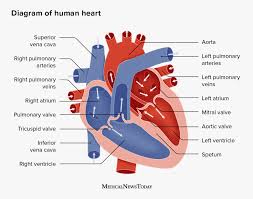Introduction

The term “hard block” might appear deceptively simple, but its usage spans a wide array of disciplines—each with its own nuance and technical meaning. From engineering to cybersecurity, gaming to blockchain, the concept of a hard block often refers to an unyielding, non-negotiable barrier. It can represent a physical obstruction, a software limitation, or even a regulatory boundary. In contrast to “soft blocks,” which are temporary or flexible, hard blocks are often rigid, difficult to bypass, and deliberately enforced. This essay explores the definition, context, implications, and applications of “hard block” across various sectors.
1. Hard Block in Technology and Computing
In technology, particularly within computing and networking, a hard block refers to a system-level restriction that cannot be easily overridden by user-level permissions or temporary changes. Examples include:
Firmware-Level Locks
In smartphones and computers, manufacturers may apply to certain features to prevent modification. For instance, bootloaders on Android devices may be locked to prevent unauthorized software installations. These are hard blocks that often require complex processes, such as rooting or jailbreaking, to remove.
BIOS Passwords and Hardware Restrictions
A BIOS password set at the firmware level can act as a, preventing users from booting the device or changing critical settings. These restrictions are typically enforced for security, especially in enterprise environments.
Network Firewalls and Access Control
Enterprise-grade firewalls and network policies might enforce hard blocks against specific IP ranges or protocols. Unlike soft restrictions (which may allow user override), these are controlled at the admin level and enforce strict access controls.
2. Hard Block in Video Games
In gaming, a hard block can refer to two main concepts: a gameplay mechanic or an access restriction.
Defensive Technique
In fighting games or action RPGs, a “hard block” might refer to a defensive move where the player completely negates incoming damage. Unlike dodging or parrying, which may still carry a risk, a hard block guarantees damage reduction, often at the cost of stamina or mobility.
Access Limitations
Games with in-game purchases or tiered access (e.g., freemium models) might employ s to prevent players from accessing certain content without progressing or paying. For example, players might be hard-blocked from entering a zone unless a certain quest is completed.
3. Hard Block in Engineering and Manufacturing
In engineering, a hard block typically refers to a solid, immovable component used in construction, prototyping, or modeling. These blocks serve as structural or testing elements:
CAD Prototypes
Engineers often use in CAD (computer-aided design) environments to simulate obstructions or test-fit designs. These virtual hard blocks represent objects that cannot be altered or moved.
Machining and Fixtures
In mechanical engineering, are used as fixtures during milling, turning, or drilling processes. They help maintain stability and ensure precision, serving as both physical boundaries and support elements.
4. Hard Block in Blockchain Technology
In blockchain systems, the concept of a “hard block” is somewhat abstract, but can relate to:
Hard Forks and Immutable Blocks
A hard fork occurs when blockchain rules change in a non-backward-compatible way. Blocks that belong to the pre-fork or post-fork version can act as hard blocks—they exist permanently on their respective chains and are immutable.
Protocol Enforcement
Blockchain networks might enforce hard blocks on transactions that don’t meet consensus rules. For example, if a transaction exceeds the block size limit or violates smart contract logic, it is rejected outright.
5. Hard Block in Legal and Policy Contexts
From a regulatory perspective, a hard block can be seen in:
Immigration and Travel
Governments may place hard blocks on travelers from specific countries due to political conflicts or health concerns (e.g., pandemics). These are strict prohibitions, not subject to exceptions or leniency.
Financial Sanctions
Banks and financial institutions may implement on accounts due to fraud detection, sanctions compliance, or legal orders. These hard blocks freeze funds, restrict access, and often require formal resolution processes.
6. Hard Block in Psychology and Creativity
Interestingly, the term “hard block” also applies metaphorically in creative fields, especially writing and design. A hard block here refers to an intense form of creative paralysis, different from the typical “writer’s block.”

Characteristics
- Long-term inability to create or produce.
- Often caused by burnout, anxiety, or trauma.
- Unlike temporary mental fatigue, can persist for months or years.
Coping Mechanisms
Overcoming a hard block may require therapy, change of environment, or shifting creative focus. It’s a subject often discussed in art therapy and psychological counseling.
7. Soft Block vs. Hard Block: Key Differences
| Feature | Hard Block | Soft Block |
|---|---|---|
| Flexibility | Rigid, cannot be bypassed easily | Temporary, often reversible |
| Enforcement Level | System-level, often hardware or admin-based | User-level or conditional |
| Purpose | Security, control, structure | Guidance, convenience |
| Examples | BIOS lock, firewall rule, legal sanction | Game level restriction, browser warning |
11. Ethical Considerations of Hard Blocks
The implementation of hard blocks often raises significant ethical questions, particularly when they affect accessibility, autonomy, or fairness. This is especially evident in fields such as digital rights, surveillance, and global finance.
Digital Rights and Freedom
In countries with authoritarian regimes, on internet content or applications (such as messaging platforms, news websites, or social media) are often used to limit freedom of expression. These restrictions can silence dissent, restrict civil liberties, and create isolated digital environments. While these are technically just “network filters” or “firewall rules,” their enforcement as immutable restrictions makes them with severe societal consequences.
Conversely, in democratic societies, ethical frameworks are being developed to govern when and how such blocks should be used. For example, blocking websites that distribute child exploitation content is widely accepted, but blocking political content is not. This highlights the contextual nature of ethical enforcement around hard blocks.
Financial Exclusion and Inequality
In the financial sector, hard blocks can unintentionally—or intentionally—exclude marginalized populations. Sanctions, credit restrictions, and risk classifications often impact individuals based on their nationality, social status, or economic history. As financial systems become more digitized, the risk of algorithmic bias implementing hard blocks without due human oversight grows, raising critical questions around transparency and accountability.
12. Bypassing Hard Blocks: Methods and Motivations
Despite their intended immutability, hard blocks are often challenged by users who perceive them as unjust, inconvenient, or unnecessary. Bypassing such blocks can be legal or illegal, ethical or unethical, depending on the context.
Technical Workarounds
- VPNs and Proxy Servers: Used to bypass network-level censorship or region locks.
- Rooting/Jailbreaking Devices: Grants users access to system-level settings blocked by manufacturers.
- Custom Firmware and ROMs: Used to override hardware-level software constraints.
- Flash BIOS Tools: Engineers and technicians may reset or remove from computer BIOS/UEFI systems.
Social and Legal Activism
Users, developers, and activists may campaign for the removal of certain —especially those seen as overly restrictive or harmful. The “Right to Repair” movement is one example, advocating against manufacturer-imposed hard blocks that prevent device owners from repairing their hardware.
Legal Risks
Bypassing certain hard blocks may violate terms of service or laws. For example, jailbreaking an iPhone could void the warranty or violate the Digital Millennium Copyright Act (DMCA) in the U.S., depending on its purpose.
13. Philosophical Perspective: Control vs. Freedom
Hard blocks can also be examined through a philosophical lens—primarily as a representation of power, control, and resistance in human systems.
The Architecture of Control
In philosopher Michel Foucault’s writings on discipline and surveillance, the idea of structured, rigid boundaries fits neatly with the concept of a Systems that impose hard limits are often designed to produce compliance and discourage deviation. This can be positive (e.g., enforcing ethical standards) or oppressive (e.g., controlling free thought).
The Human Desire to Resist
History shows that whenever absolute controls are put in place, there emerges an equally strong human desire to resist or subvert them. Whether it’s bypassing firewalls in censored nations, cracking DRM on media, or unlocking personal devices, hard blocks often become a flashpoint between authority and individual agency.
14. Case Study: China’s Great Firewall
One of the most famous examples of in action is China’s Great Firewall—a government-run infrastructure designed to filter internet traffic and block foreign content deemed politically sensitive or culturally inappropriate. This system:
- Blocks websites like Google, Facebook, Twitter, and Wikipedia.
- Uses IP blacklisting, DNS spoofing, and deep packet inspection.
- Applies both hard and soft blocks—some content is fully inaccessible, others are merely slowed down or discouraged.
While this maintains state control and claims to protect national sovereignty, critics argue it severely restricts access to information and impedes global collaboration.
15. Hard Blocks in Emerging Technologies
As AI and autonomous systems become more integrated into society, the design of at a system level will become even more crucial.
AI Safety and Alignment
AI systems—especially those used in critical infrastructure or military applications—may be programmed with hard-coded restrictions (e.g., do not harm humans, do not engage in unauthorized actions). These are examples of “hard moral blocks” embedded within decision-making logic. Whether or not these blocks are sufficient to control powerful AI remains a topic of intense debate.
Autonomous Vehicles
Hard blocks are implemented to prevent driverless cars from operating in unsafe environments, entering restricted zones, or exceeding speed limits. These constraints are essential to public safety and legal compliance.

16. Balancing Flexibility and Security
One of the most challenging design dilemmas in any system—whether technical, social, or organizational—is how to balance security and rigidity (hard blocks) with adaptability and user control. Systems that are too rigid may become obsolete or provoke resistance, while systems without hard controls may become chaotic or insecure.
The future likely lies in context-aware —smart restrictions that can adapt based on changing environments, behaviors, or ethical requirements. These might involve AI-driven policy engines, transparent user-consent mechanisms, or decentralized governance structures.
Conclusion (Expanded)
Hard blocks are not merely technical or structural limitations—they are reflections of deeper societal needs for safety, control, and order. Whether found in silicon circuits, lines of code, regulatory frameworks, or human psychology, define the boundaries of what can and cannot be done. As our world becomes more digital, interconnected, and automated, understanding the implications of will be crucial—not just for engineers and designers, but for anyone navigating the boundaries of modern life.
Let me know if you’d like this content compiled into a downloadable file, or if you want help with citations or references.
17. Hard Blocks and Digital Sovereignty
In the 21st century, nations are increasingly asserting control over their digital landscapes. This movement toward digital sovereignty involves implementing hard blocks to regulate foreign technology, control data flows, and protect national security.
Europe’s GDPR and Data Localization
The European Union’s General Data Protection Regulation (GDPR) can be viewed as a form of legal on data misuse. It imposes strict rules on how companies collect, store, and process user data. While not a technological per se, its enforcement leads to technical adaptations—such as geofencing, region-based data storage, and access limitations.
Some countries like Russia, China, and India are implementing data localization laws that require citizen data to be stored within national borders. These laws effectively data from leaving the country, creating regulatory silos in global internet architecture.
Censorship vs. Sovereignty
Critics argue that digital sovereignty can sometimes mask censorship and authoritarianism. Nations using under the guise of sovereignty may suppress dissent or limit democratic freedoms. Therefore, a balance must be struck between protecting national interests and upholding global rights to information and communication.
18. Hard Blocks in Supply Chain and Logistics
In the global economy, logistics and supply chain management increasingly rely on digital systems that sometimes enforce hard blocks—especially during crises.
COVID-19 Supply Disruptions
During the COVID-19 pandemic, countries implemented on the export of critical medical supplies like masks, ventilators, and vaccines. These trade barriers had profound humanitarian and economic impacts, especially on developing countries dependent on imports.
Blockchain for Supply Chain Integrity
Hard blocks also play a role in ensuring transparency in supply chains. Blockchain-based solutions can enforce immutability and non-repudiation in records—meaning that once a transaction or record is entered, it cannot be altered. These act as digital hard blocks against fraud or manipulation, increasing accountability in industries like food safety, pharmaceuticals, and luxury goods.
19. Education and Access: When Hard Blocks Harm
While hard blocks are often necessary, their application in education and learning environments must be handled with care. Strict firewalls, content restrictions, or platform access controls can sometimes limit educational opportunities, especially in underprivileged areas.
The Digital Divide
Students in rural or low-income regions may face not due to policy, but infrastructure. A lack of internet, devices, or support creates systemic barriers—unintentional —that restrict access to quality education.
Academic Firewalls
Some universities and governments restrict access to certain research materials for reasons of intellectual property or national interest. While these protect rights, they can slow global scientific collaboration—particularly in areas like climate change or medicine, where knowledge sharing is vital.
20. Future of Hard Blocks: Smarter, Context-Aware Systems
As artificial intelligence, 5G, and quantum computing reshape digital infrastructure, are becoming more dynamic and intelligent.
Adaptive Security Systems
Next-generation cybersecurity tools use AI to enforce conditional —only triggering restrictions based on real-time risk assessments. For example:
- Blocking data transfers during suspicious activity
- Locking down systems automatically during an attack
- Granting or revoking access based on behavior patterns
These context-aware hard blocks combine the permanence of traditional blocks with the adaptability of AI, making systems both secure and responsive.
Smart Contracts and Immutable Logic
In decentralized finance (DeFi) and Web3 applications, smart contracts are automated agreements encoded on blockchains. Once deployed, their logic cannot be changed without a fork or system-wide update—making them a form of code-level hard block. This immutability ensures trustless operations but can also cause serious issues if a contract contains bugs or security flaws.
21. Cultural Dimensions of Hard Blocks
The perception and acceptance of often vary by culture.
Western vs. Eastern Models
In Western societies, where individual freedom is highly valued, hard blocks are often resisted unless transparently justified (e.g., child protection, cybersecurity). In contrast, Eastern or collectivist societies may be more accepting of top-down controls if they serve a broader purpose like social harmony or national security.Hard Block
Generational Differences
Younger generations tend to be more tech-savvy and skeptical of authority-imposed limits. They are more likely to:
- Find workarounds
- Advocate for open-source alternatives
- Demand transparency in how and why blocks are enforced
This generational shift will likely influence how future systems implement and justify hard blocks, leading to more user-centric designs.
22. Conclusion: Rethinking the Role of Hard Blocks
Hard blocks serve as vital instruments of control, structure, and protection across numerous domains—technology, governance, engineering, education, and beyond. However, their application must be intentional, proportionate, and ethically sound.
In a fast-evolving digital world, hard blocks are not just technical solutions—they are reflections of our values. When used responsibly, they enhance security, preserve integrity, and uphold justice. When abused or overused, they become instruments of oppression, exclusion, and stagnation.
The challenge ahead is to develop flexible, accountable, and transparent systems where hard blocks are:
- Clearly defined
- Contextually appropriate
- Open to scrutiny
- Balancing freedom with responsibility
Ultimately, hard blocks are not just about stopping action—they are about defining boundaries that protect and empower.
Let me know if you’d like help turning this essay into a polished academic paper, with citations and formatting (APA, MLA, Chicago, etc.). Would you like references or a bibliography section next?